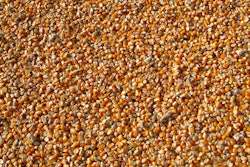
The U.S. Department of Agriculture’s National Agricultural Statistics Service (NASS) released its annual Acreage and quarterly Grain Stocks reports today, revealing significant shifts in crop plantings and varying stock levels across different commodities.
According to the Acreage report, U.S. farmers planted 91.5 million acres of corn in 2024, marking a 3% decrease from the previous year. However, the area planted with soybeans increased by 3% to 86.1 million acres. Cotton saw a substantial rise with a 14% increase to 11.7 million acres for all cotton types, including a 24% jump in American Pima cotton plantings.
The report also highlighted a decline in wheat acreage, with overall wheat plantings down 5% to 47.2 million acres. Notably, winter wheat plantings decreased by 8%, while durum wheat surged 29%, reflecting changes in farmer planting choices based on market and environmental conditions.
Biotechnology remains a strong focus among growers, with 94% of all corn acres and 96% of Upland cotton acres planted using biotech varieties. Herbicide-resistant soybean varieties were used in 96% of the plantings, indicating a continued trend towards genetically modified crops.
In tandem with the Acreage report, NASS also released the Grain Stocks report, providing insights into the storage levels as of June 1:
- Corn stocks totaled 4.99 billion bushels, an increase of 22% from last year, driven by a 37% rise in on-farm stocks.
- Soybean stocks stood at 970 million bushels, up 22% from the previous year, with on-farm stocks seeing a significant 44% increase.
- Wheat stocks were at 702 million bushels, 23% higher than last year, with off-farm stocks up 27%.
- Conversely, durum wheat stocks decreased by 24% to 21.1 million bushels.
The Rice Stocks report also noted changes:
- Rough rice stocks reached 2.73 million metric tons, up 37% from last year.
- Milled rice stocks, however, declined by 7% to 218,270 metric tons.
These reports are crucial for agricultural decision-makers, providing benchmark data that helps predict commodity trends and potential price movements. They reflect how farmers are responding to market demands and climatic conditions, and they play a key role in managing supply chain expectations in the agricultural sector.

















